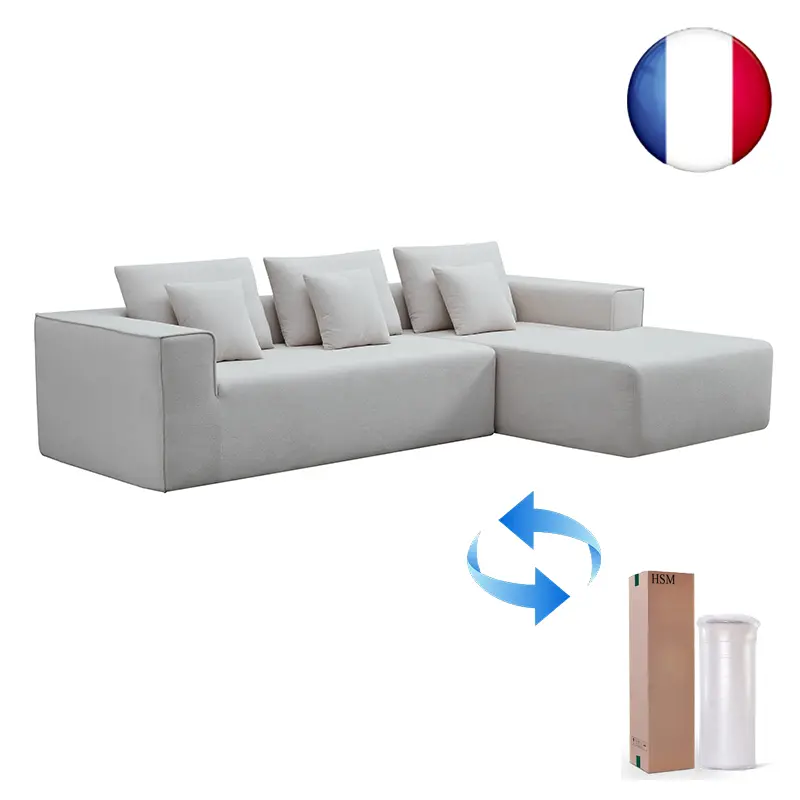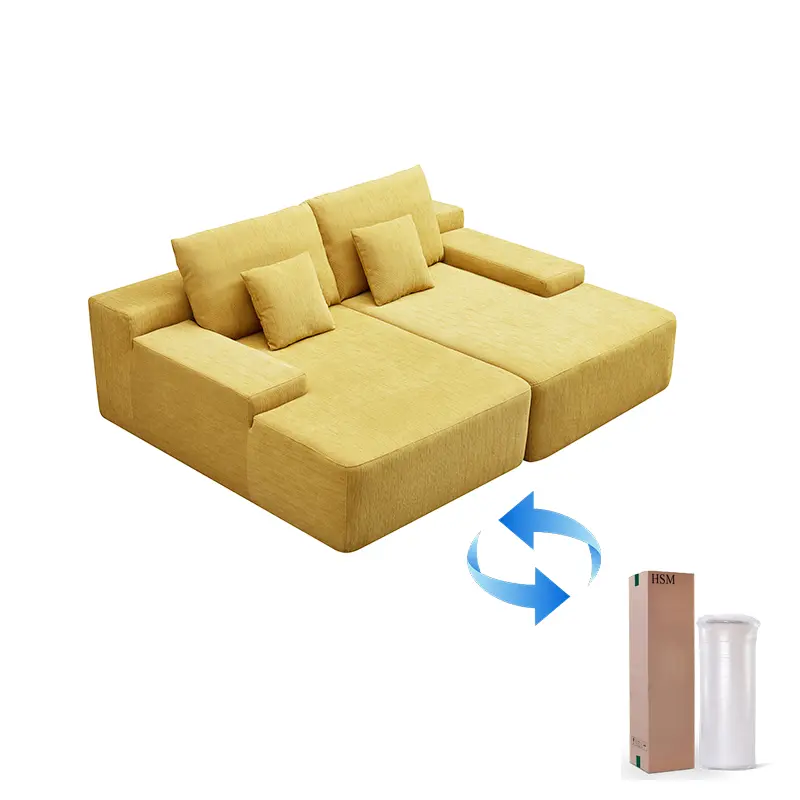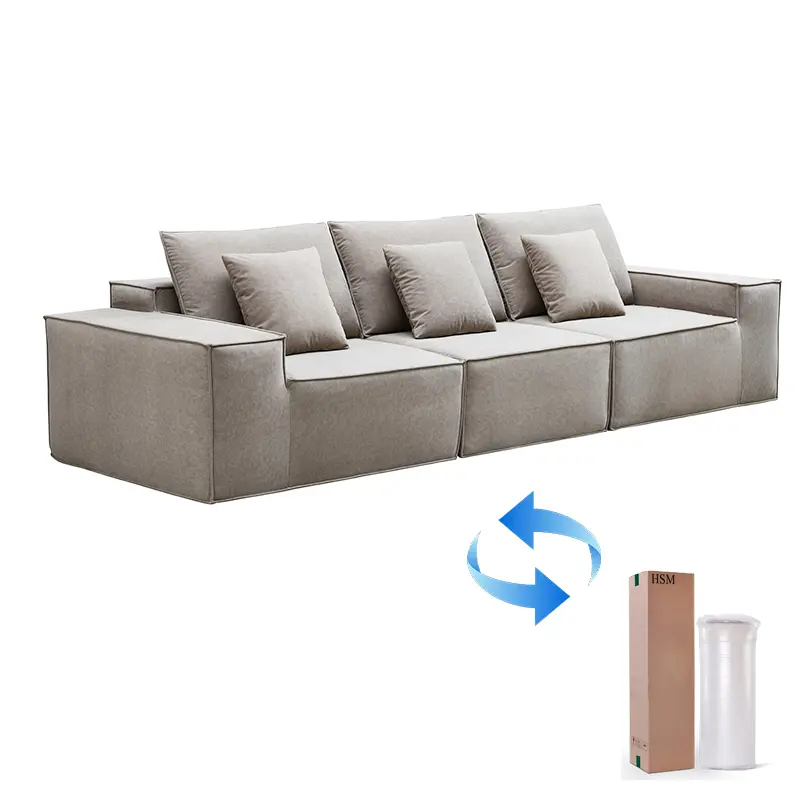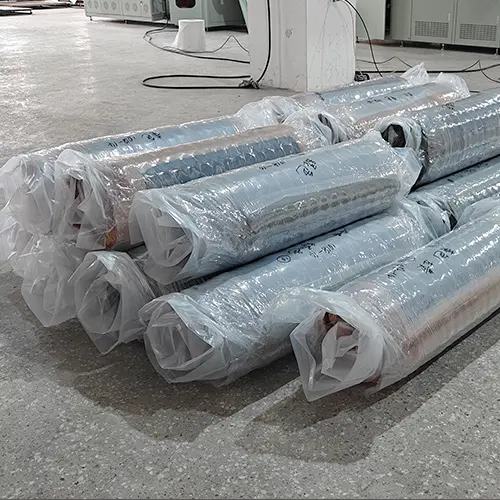Can a Compressed Sofa Provide Orthopedic Support?
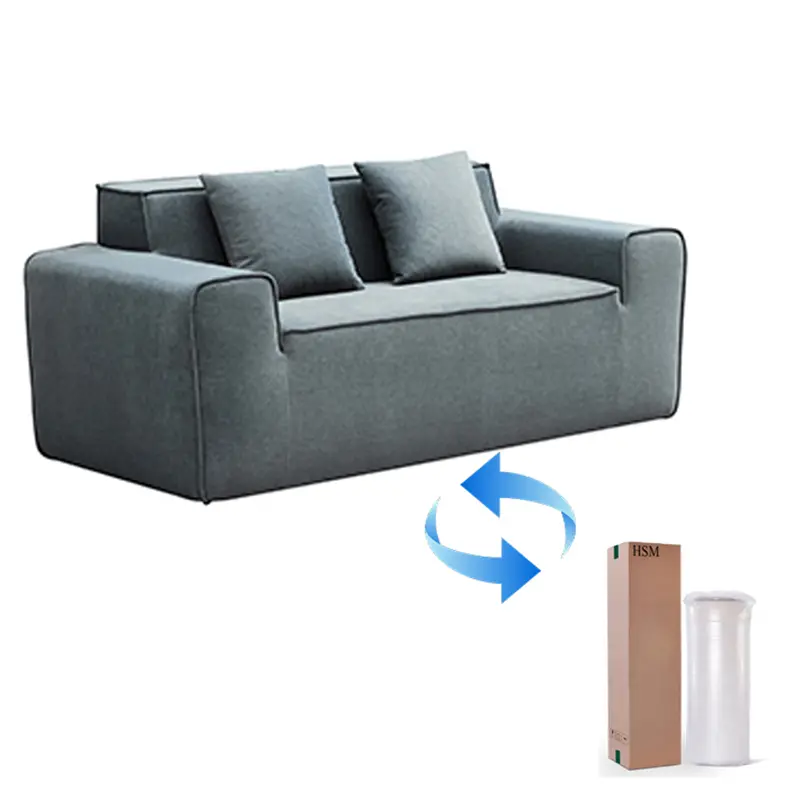
Finding the right Sofa Goes beyond aesthetics—it should also support your body and promote healthy posture. If you suffer from back pain or joint discomfort, you might wonder if acompressed sofa can provide orthopedic benefits.
Yes, a well-designed compressed Sofa Can offer orthopedic support, but its effectiveness depends on the quality of materials, foam density, and ergonomic features.
Let’s explore how a compressed sofa can support orthopedic health and what factors you should consider before making a purchase.
How Can a Compressed Sofa Provide Orthopedic Support?

A sofa’s orthopedic benefits largely depend on foam density, ergonomic design, and material choice. A high-quality compressed sofa can promote spinal alignment, reduce pressure points, and improve overall comfort.
Here are the key factors that determine its orthopedic effectiveness:
1. Foam Density and Compression
The type of foam used in a sofa significantly impacts its ability to provide orthopedic support.
- High-density foam maintains its shape and provides even weight distribution, reducing pressure on joints and muscles.
- Compression technology ensures that the foam retains resilience, preventing sagging over time.
- A firm yet adaptive surface helps keep the spine in a neutral position, preventing back pain.
2. Ergonomic Design
A well-designed compressed sofa should support natural body posture and reduce strain on pressure points. Look for these orthopedic-friendly features:
- Adjustable backrests to support the spine.
- Lumbar support cushions to relieve lower back pressure.
- Contoured seat cushions that follow the natural curves of the body.
3. Material Choice Matters
The right materials enhance a sofa’s orthopedic support. Some high-quality options include:
| Material | Orthopedic Benefit |
|---|---|
| Memory Foam | Molds to the body’s shape, reducing pressure points. |
| Gel-Infused Foam | Regulates temperature and relieves joint pain. |
| High-Resilience Foam | Offers long-lasting support and prevents sagging. |
Now that we’ve covered the potential benefits, let’s look at some limitations of compressed sofas for orthopedic support.
Potential Limitations of a Compressed Sofa for Orthopedic Support
1. Personal Comfort Preferences
Orthopedic support is subjective. Some people prefer a softer, more cushioned feel, while others need a firm surface for back support.
- If a compressed sofa is too firm, it may cause discomfort for people who prefer a plush seating experience.
- If it’s too soft, it may lack the necessary support, leading to poor posture.
2. Quality and Construction
Not all compressed sofas are created equal. The orthopedic benefits depend on build quality and foam density.
- Low-quality foam may break down over time, leading to uneven support.
- Poor frame construction can reduce stability and impact spinal alignment.
- Inconsistent compression may cause pressure points instead of relieving them.
3. Intended Use of the Sofa
The way you plan to use your sofa also plays a role in how much orthopedic support you need.
| Intended Use | Orthopedic Consideration |
|---|---|
| Everyday lounging | Requires a balance of comfort and support. |
| Sleeping | Needs high-density foam to maintain spinal alignment overnight. |
| Home office seating | Should include ergonomic lumbar support for prolonged sitting. |
How to Choose a Compressed Sofa with the Best Orthopedic Support
If orthopedic support is a priority, look for the following key features:
✔ High-Density Foam: Provides long-lasting, firm support.
✔ Ergonomic Backrest Design: Helps maintain proper posture.
✔ Multi-Layer Foam Structure: Combines support and cushioning.
✔ Adjustable Lumbar Support: Reduces lower back strain.
✔ Breathable Materials: Prevents heat buildup and enhances comfort.
Conclusion
A high-quality compressed sofa can provide orthopedic support if it includes the right materials, foam density, and ergonomic design. However, personal comfort preferences and intended usage play a crucial role in determining whether a compressed sofa meets your needs.
If you prioritize spinal health, posture correction, and joint relief, investing in a high-density foam sofa with ergonomic features is essential. Consider consulting a healthcare professional if you have specific orthopedic concerns before making a purchase.
Would you choose a compressed sofa for orthopedic support? Let us know in the comments!








